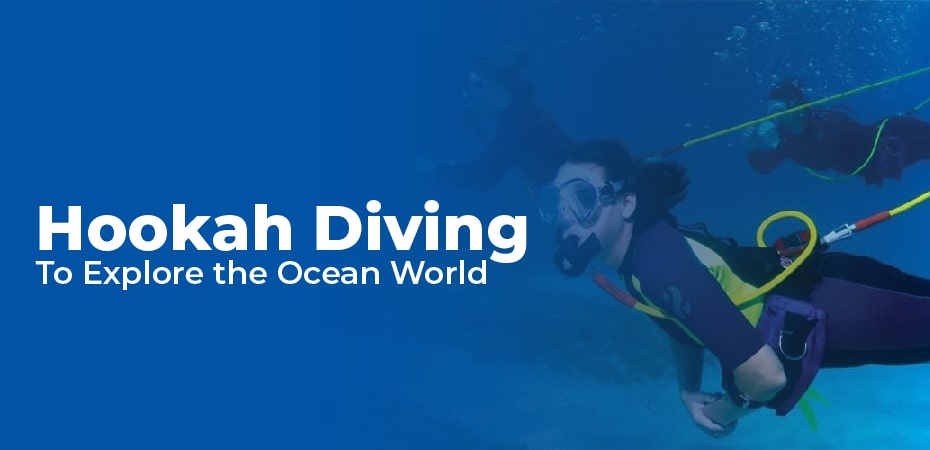Table of Contents
Surface supply diving is ideal for anyone who wants to explore the underwater world without the cumbersome gear of traditional scuba diving. A hookah diving system allows you to explore with minimal interference to your range of motion.
Once you have mastered snorkeling, you may want to consider a hookah diving system, also known as a Surface Supplied Breathing Apparatus (SSBA). Snorkeling is made easier and more enjoyable when combined with scuba diving.
Understanding of Hookah Diving:
Hookah diving uses an air compressor that delivers air through a long hose called a down-line to the diver under water. It can run for about three to five hours on a tank of petrol and supply air to multiple divers at the same time (depending on its size).
A hookah diving system typically includes a battery or petrol-powered air compressor that distributes air to the hookah diving diver via a long hose called a down-line. Although many divers prefer to use a BCD or a first stage regulator, hookah diving does not require them. The down-line and optional weight belt are attached to divers’ harnesses or BCDs. With a hookah system, divers use a regulator designed specifically for use with the second stage. Typical scuba regulators won’t work.
The Advantages of Hookah Dive Systems:
- There is no need to carry heavy scuba cylinders
- The hookah system prevents you from straying away
- allowing you to dive with multiple people
- at once and dive deeper than snorkeling
- Scuba diving is less expensive than snorkeling
- The floating platform on the surface alerts other boaters to your whereabouts underwater
Types of Hookah Dive Systems:
Hookah dive systems are classified into two types: dynamic and passive.
Dynamic System:
Dynamic systems provide air through the use of a mechanical device, such as a compressor driven by an electric or petrol motor. Air is delivered at the proper pressure by the air compressor. There is also a holding or reserve tank that ensures constant pressure. Air is added to the tank as it leaves the tank, so the pressure remains constant. Petrol and electric compressors are available.
Passive System:
Passive systems have no moving parts, but use compressed air reservoirs, such as scuba tanks, to move air. Most scuba equipment is passive. As the air supply, some hookah systems for commercial diving use a bank of scuba cylinders at the surface.
Hookah compressors are fixed to docks or boats. A floating air source refers to a platform that the diver is pulling along with them.
Dive Systems: Petrol vs. Electric Hookah:
Hookah systems come in both petrol and electric versions.
One or two divers can dive and breathe easily with a gasoline powered hookah system that includes a higher output compressor. This is the common type of hookah diving system. They are more difficult to maintain than electric versions. Their noise level is also higher. The better Petrol units typically support one diver at 40 meters (130 feet) or two divers at 25 metres (80 feet) comfortably. Crayfish (lobster), scallops and abalone hunting, advanced recreational diving, and commercial diving applications require them.
In comparison to petrol-powered hookahs, electric hookahs require less maintenance. You can charge them on the boat or connect them to the power supply. You can start them easily, and they are less prone to corrosion. They are typically able to support one diver to a depth of 12 metres or two divers to a depth of 6 metres. Electrified units are better suited to families and fun, plus boat owners needing to do some underwater maintenance at shallow depths.
Application of Hookah Dive System:
Hookah diving systems are ideal for:
- Dive deeper without the weight of scuba gear
- For underwater photography and videography, you can get close to sea life and coral formations
- If you want to catch crayfish (lobster), scallops, or abalone, stay underwater until you do
- A marine science study.
- If the boat needs maintenance, go underwater.
- inspect its hull
- and the marina’s moorings
- Repairs and maintenance of the swimming pool
- retrieval of golf balls
- by disabled divers

